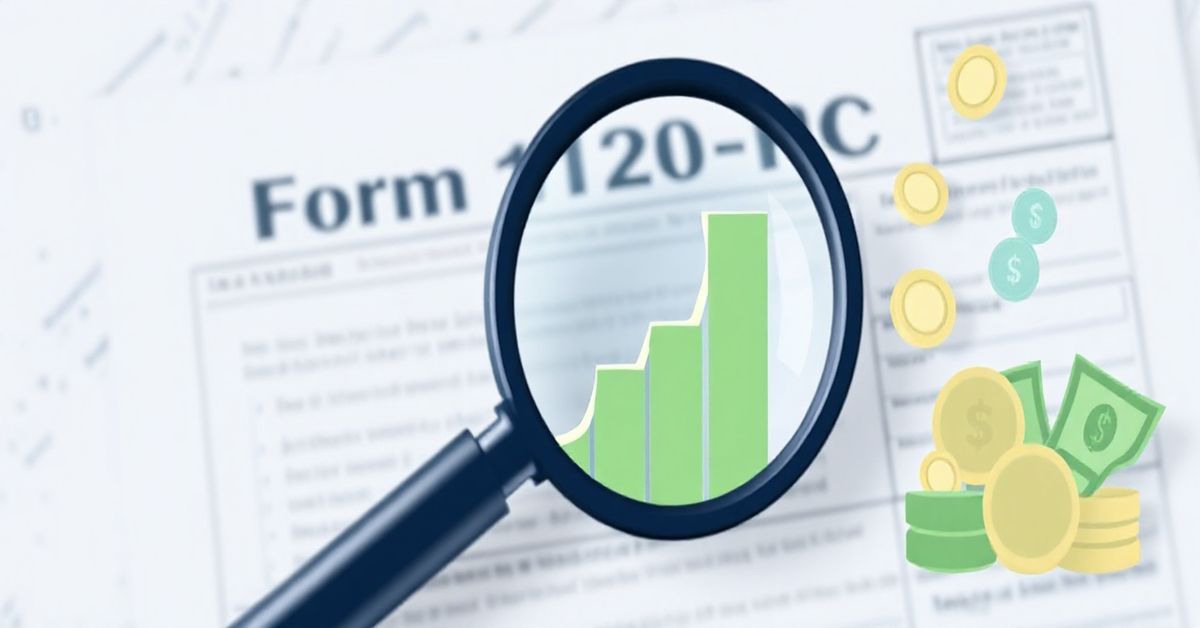What Exactly is Form 1120-RIC?
Think of Form 1120-RIC as the tax return for a very specific type of business: a regulated investment company (RIC). These aren’t your typical corporations. RICs are investment vehicles like mutual funds, exchange-traded funds (ETFs), and certain other investment trusts that pool money from many investors to buy a variety of securities. Because they operate differently, they have their own unique tax return—Form 1120-RIC.
Background: Why Have a Special Tax Form?
The creation of Form 1120-RIC stems from the desire to encourage public investment and avoid double taxation. Imagine if a company paid taxes on its profits, and then when that company distributed its profits to investors, those investors also had to pay taxes on the same income – that’s double taxation, and it’s not very efficient. To prevent this, the tax code established special rules for RICs. If they meet certain qualifications, RICs can avoid paying corporate taxes on the income they distribute to their shareholders. Instead, the shareholders pay taxes on the distributions they receive. This special tax treatment is why we need a special tax form like Form 1120-RIC.
How Form 1120-RIC Works: The Basics
Form 1120-RIC is where RICs report their income, deductions, and compute their taxable income. Here’s a simplified overview of the process:
- Income Reporting: RICs report all income received from their investments, including dividends, interest, and capital gains.
- Deductions: RICs can deduct certain expenses related to their operations.
- Dividends Paid Deduction: A critical part of the form is the “dividends paid deduction”. This allows RICs to deduct dividends paid to shareholders from their taxable income, reducing or eliminating the amount of corporate tax they pay. The whole point is to pass along income directly to investors rather than have it be taxed at the corporate level.
- Tax Calculation: After deducting expenses and dividends, the remaining income (if any) is used to calculate the RIC’s tax liability. However, because of the dividends paid deduction, this taxable income is often minimal or zero.
Key Sections of Form 1120-RIC
Form 1120-RIC can be a complex document but some of its most important parts include:
- Income: This includes all types of income a RIC can earn. It also includes the sale of assets.
- Expenses: Similar to any company, a RIC has operational expenses. These can include management costs, custodian fees, and other costs of doing business.
- Taxable Income and Tax: After subtracting deductions, the RIC can calculate its taxable income. The form also shows any income taxes owed, but again, the goal is that those are very low due to the dividends paid deduction.
- Dividends Paid Deduction: This is a critical part of the form, where the RIC calculates the amount of dividends it paid to shareholders. The higher the distribution, the lower the RIC’s corporate taxable income.
- Capital Gains: RICs also track their capital gains and the distributions to shareholders for those gains.
Who Needs to File Form 1120-RIC?
This form is specifically for entities that qualify as regulated investment companies. These include:
- Mutual Funds: Investment companies that pool money to invest in stocks, bonds, and other securities.
- Exchange-Traded Funds (ETFs): Similar to mutual funds, but traded on stock exchanges.
- Unit Investment Trusts (UITs): Generally, these invest in a fixed portfolio of assets for a specific period.
- Certain Business Development Companies (BDCs): Companies that invest in small and developing businesses.
To qualify as a RIC, these companies must adhere to specific rules set by the IRS, primarily related to asset diversification and income distribution requirements.
Related Concepts: Understanding the Bigger Picture
Understanding the role of Form 1120-RIC requires knowledge of these related terms:
- Regulated Investment Company (RIC): As mentioned, this is the type of company that uses this form. RICs must meet specific requirements to qualify for the special tax treatment.
- Dividends Paid Deduction: This critical deduction allows RICs to significantly reduce or even eliminate their corporate tax burden by passing the income to shareholders.
- Pass-Through Taxation: The tax structure for RICs is a “pass-through” model, where income is taxed at the investor level, not the corporate level.
- Shareholder: The people or entities who own shares in the RIC and receive distributions.
- Capital Gains: The profit from the sale of a capital asset. RICs pass these gains to shareholders.
Common Mistakes and Misconceptions
- Thinking all Investment Companies Use This Form: Not all investment companies are RICs. Private investment funds, for example, generally use a different business structure and have different tax requirements.
- Ignoring Qualification Requirements: RICs must meet certain tests to qualify for this special tax treatment, including diversification rules and distribution requirements. Failure to meet these can result in penalties.
- Assuming it’s Just a Standard Corporate Tax Form: The 1120-RIC is specific to RICs. It has unique rules, especially with the dividends paid deduction, that don’t apply to standard corporations.
Tips for RICs When Filing Form 1120-RIC
- Keep Accurate Records: Maintaining precise records of all income, expenses, and distributions is essential for accurate filing.
- Consult with a Tax Professional: RIC regulations and tax laws are complex. Seeking guidance from a tax advisor experienced with RICs can prevent errors.
- Ensure Compliance with RIC Requirements: Regularly review that your company is meeting all the requirements to be classified as a RIC to avoid penalties and ensure favorable tax treatment.
The Importance of Understanding Form 1120-RIC
For regulated investment companies, correctly filing Form 1120-RIC is essential for maintaining their tax-advantaged status. For investors in these companies, understanding how the tax structure works helps in comprehending the tax implications of their investment. This form plays a crucial role in ensuring that investment income passes through to investors with limited corporate-level taxation.

